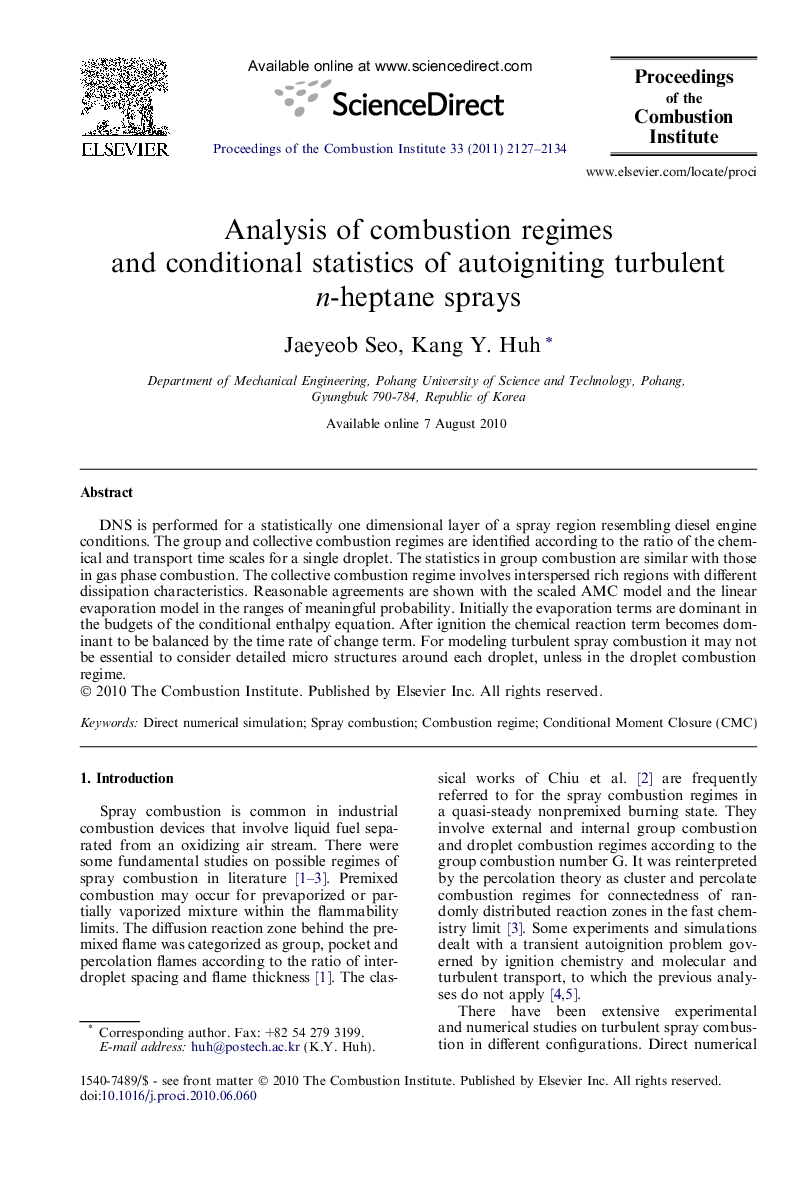| Article ID | Journal | Published Year | Pages | File Type |
|---|---|---|---|---|
| 240661 | Proceedings of the Combustion Institute | 2011 | 8 Pages |
DNS is performed for a statistically one dimensional layer of a spray region resembling diesel engine conditions. The group and collective combustion regimes are identified according to the ratio of the chemical and transport time scales for a single droplet. The statistics in group combustion are similar with those in gas phase combustion. The collective combustion regime involves interspersed rich regions with different dissipation characteristics. Reasonable agreements are shown with the scaled AMC model and the linear evaporation model in the ranges of meaningful probability. Initially the evaporation terms are dominant in the budgets of the conditional enthalpy equation. After ignition the chemical reaction term becomes dominant to be balanced by the time rate of change term. For modeling turbulent spray combustion it may not be essential to consider detailed micro structures around each droplet, unless in the droplet combustion regime.
